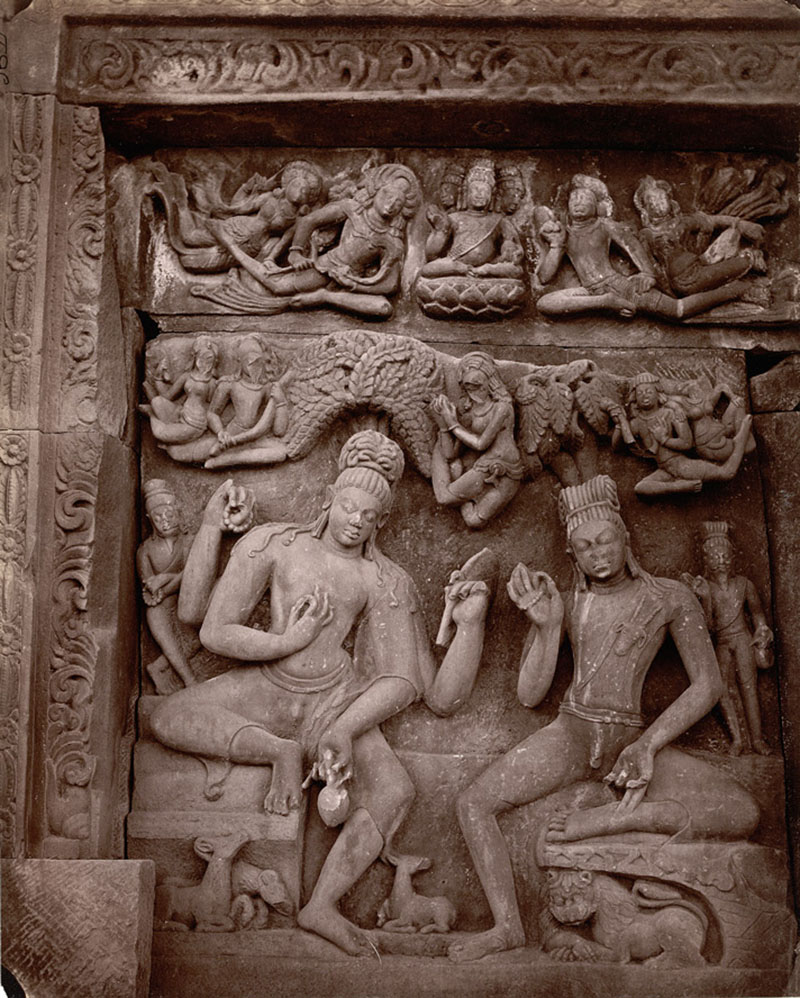ARTICLE
Dashavatara Temple, Deogarh
Finally, the niche on the southern wall has a panel depicting a four-armed Vishnu reclining on the coils of the serpent Shesha (also known as the Anantashayana posture) with Brahma seated on a lotus arising from his navel. Vishnu is flanked by four figures: to his right are Indra on his elephant mount and Kartikeya on his peacock mount, and to his left are Shiva and Parvati seated on the bull Nandi. By Vishnu’s right foot is his consort Lakshmi, along with his Garuda and a whisk-bearing female attendant. Below this large relief are the mythological demons Madhu and Kaitabha in battle with the ayudhapurushas – anthropomorphic forms of Vishnu’s weapons.
These four depictions of Vishnu from Vaishnava mythology are interpreted by some as a realisation of the chaturvyuha concept of the four emanations of his divine nature, and by others as the themes of progressive enlightenment and attainment of moksha. If the chaturvyuha doctrine were to be considered, the circumambulation would be clockwise, whereas if the alternate theme of spiritual progression were to be considered, it would be anti-clockwise. A notable point of contention among scholars is the validity of the label ‘Dashavatara’ popularly ascribed to this Gupta temple. Although the temple is undoubtedly dedicated to Vishnu and his various incarnations, some scholars argue that, in the absence of an actual Dashavatara panel, its name could have been mistaken.
There is no doubt about the historical and architectural value of this temple. Often discussed in the context of other early Gupta period temples such as the Parvati temple at Nachna-Kuthara and the Bhumara temple in Madhya Pradesh, the Dashavatara temple is the earliest fully structural temple in north India to possess a shikhara. Most of the knowledge that we do have about the temple is owed largely to its intact central shrine, the partially damaged shikhara and the many sculptural panels found in and around the temple site. At the time of writing, some of the narrative plinth panels recovered from the site are housed in the National Museum, Delhi.
Bibliography
Our website is currently undergoing maintenance and re-design, due to which we have had to take down some of our bibliographies. While these will be re-published shortly, you can request references for specific articles by writing to hellomapacademy@map-india.org.







